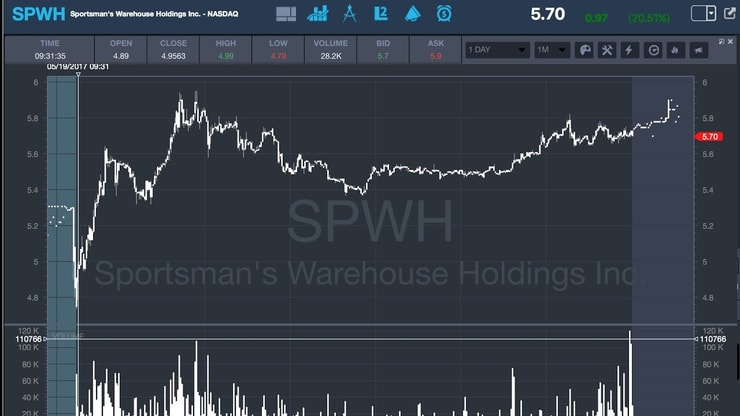What are Stock Patterns?
URGENT: Grab this Profitly sale HERE and message me HERE if you want a deal on Dux’s new guide!
I drill the need to focus on only the best stock market patterns to my trading challenge students every single day so that begs the question, what are stock patterns, exactly, and why do they matter?
Patterns are just what they sound like: predictable ways in which stocks perform. By beginning to identify patterns in stocks, you’ll be able to improve your trading and gain an edge which can help you become a more profitable trader…even though this is NOT an exact science so never think any pattern will be the exact same as before…although patterns like these are eerily similar as you’ll learn if you trade penny stocks long enough!
Here are some things to know when looking for the best patterns in penny stocks, reading this new book and memorizing this free guide will help you a lot too.
1. History repeats itself. When it comes to trading stocks, you don’t have to reinvent the wheel every single time you trade. As you begin to gain more prowess as a trader, you’ll start to identify distinct patterns that characterize a stock’s movement that can help your trading. Basically, exploring the question of “what are stock patterns?” can make you a better trader.
Now, when I say that history repeats itself, though, that doesn’t mean it’s exactly to the letter. There will be slight differences. This means that you always have to be on your toes. What you’ll begin to see is that patterns emerge, but they are always a little bit different. This means that instead of looking for the same exact things, you’ll really begin to identify markers that can help you choose the best stocks to trade.
2. There’s not just one type of pattern. As referenced above, there’s not just one type of pattern. There are many different types of patterns that can occur in the stock market. While in one regard they’re truly like snowflakes (no two are ever quite the same) there are some distinct types of patterns that I’ve identified over the years. Some of these include the Dip Buy, Push-Through, Daily Breakout, and more. I share these patterns with members of the Tim Sykes Million Challenge team so that they can begin to understand and identify them themselves.
Once you begin to understand a few basic types of patterns, you’ll be better able to work this knowledge to your advantage.

3. Patterns can (and will) shift. Traders definitely have their favorite patterns. Particularly if you begin having success with one or two types of patterns, it’s totally normal to gravitate toward them.
However, it’s important to be aware that gaining mastery of a particular type of pattern does not necessarily mean that you will always be able to profit from it. The market can (and does) shift, and patterns do, too. This means that as the market shifts or becomes more volatile at different times, the patterns may work differently. For this reason, it’s important to always study, have a trading plan, and to continue learning so that you can remain adaptable to the ever-changing market conditions.
More Breaking News
- The Meteoric Rise of NUKK: Unraveling the Latest Stock Surge
- Bitcoin’s Surge: Can Marathon Digital Keep Up?
- Is Opendoor Technologies’ Future Clouded by Recent Setbacks?
4. Understanding patterns takes time. One of the secrets to my success is that I’ve taken a lot of time to study patterns. I’ve viewed tens of thousands of stock charts and watched their movement as they have gone up and down; this has helped me understand the mechanics of patterns.
However, this is hard-earned knowledge. It doesn’t come overnight. Even my top millionaire trading challenge students have studied nonstop because to truly understand patterns, you need to commit to studying. You also need to take the time to gain experience actually trading these patterns so get ready for a marathon NOT a sprint.
Together, studying and putting your knowledge to work will really help you begin to gain an understanding of patterns. It won’t happen overnight, though. Give yourself time, and room, to grow.
5. Memorizing patterns is a waste of time. Some traders think that they have it all figured out: simply memorize the most reliable patterns, then you’re on the road to success for life. Unfortunately, it doesn’t quite work like that. I am quick to tell students in the Tim Sykes Millionaire Challenge this, too, you need to understand the WHY of how patterns are created in the first place.
Remember, patterns don’t always run the same course: you have to learn how to follow each and every pattern individually as there are usually slight variations. There are simply too many factors involved to be able to memorize patterns and have it work out every time. A better approach is to gain an understanding of identifying and following patterns so that you can intuitively follow each opportunity as it comes.
6. You can’t copy other traders. Copying other traders’ successes simply doesn’t work. Just like memorizing patterns doesn’t work, there are too many variables. While yes, you can look at what other traders are doing and get inspired by their methods, trying to copy other traders will likely not serve you. They’re doing research and they have a trading plan that you are not privy to, so even if you copy another trader’s general trading techniques, you don’t have access to all of their methods. This makes it much more of a gamble for you. It’s a better idea to form your own identity as a trader and to formulate your own trading methods. Over time, this will serve you much better.
7. You need to look at the big picture. When you begin trading, figuring out what are stock patterns to follow can feel like a big deal. However, as you move forward in your trading career, you’ll gain perspective and be able to look at the big picture. Not only will you look at the patterns of stocks, but you’ll be able to cross reference other criteria such as catalysts and news that could affect whether or not it’s a good investment. This big picture approach is how you’ll gain success over time.
Long story short, by learning how to identify patterns, you’ll give yourself an edge so that you can begin to improve as a trader and not succumb to the ugly industry stat of 90% of traders losing money.
So, leave a comment below if you understand what I’m saying and you’re ready to STUDY HARDCORE!

Leave a reply